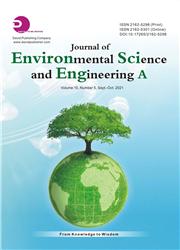Evaluation of the Insecticidal Activity of Powders of Ageratum conyzoide L. Leaves and Roots of Securidaca longepedunculata Fresen on the Germination Rate of Cowpea Infected with Callosobruchus maculatus
引用次数: 0
Abstract
: Cowpea is a vegetable that contributes to food security in Guinea. Despite its importance, more than 30% of its production is lost between harvesting, storage and consumption. The main cowpea pest is Callosobruchus maculatus . The commonly used control strategy is essentially based on chemicals whose use is toxic, expensive and restrictive. In the search for alternatives to chemical control, this work was undertaken to evaluate the insecticidal potential of Ageratum conyzoid leaf powders and Securidaca longepedunculata roots. Powder toxicity and insecticidal efficacy tests were performed separately on groups of 20 Callosobruchus maculatus using 3 doses of Ageratum conyzoid leaf powders and Securidaca longepedunculata roots in jars each containing 100 g cowpea. The mortality of Callosobruchus maculatus and the impact of powders were noted respectively for 96 h and 4 months after infestation. The germination capacity of the treated seeds was assessed at the start of the study. Doses of 1 and 8 g of Ageratum conyzoides leaf powders and Securidaca longepedunculata roots were applied respectively to every 100 g of cowpea and led to 100% mortality of Callosobruchus maculatus . At these same doses, more than half of the treated seeds were attacked during the 4 months of storage. Germination tests have shown that powders of Ageratum conyzoides leaves and roots of Securidaca longepedunculata have no negative effect on the germination power of cowpea seeds. Therefore, they could be considered as excellent bio-insecticides that socio-professional strata (farmers and warehouse workers) can use in the fight against cowpea insects intended for storage.长柄松茸叶、根粉末对豇豆病斑孔口疮发芽率的杀虫活性评价
本文章由计算机程序翻译,如有差异,请以英文原文为准。
求助全文
约1分钟内获得全文
求助全文

 求助内容:
求助内容: 应助结果提醒方式:
应助结果提醒方式:


